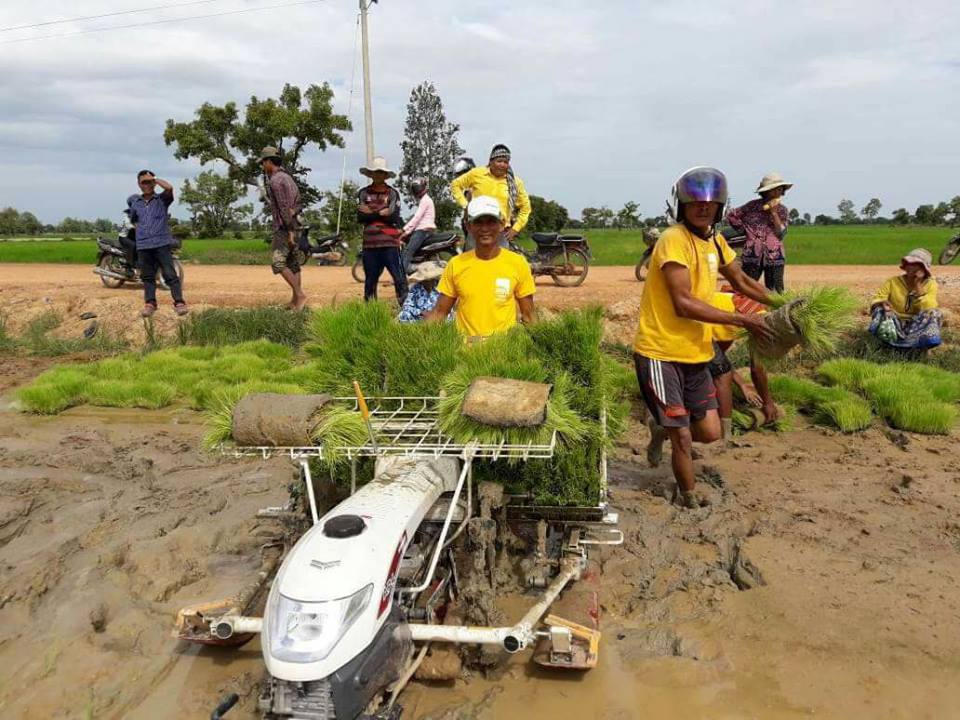
―What was the reason for choosing Cambodia when trying to deploy your services?
I traveled through Southeast Asia around 2009, and I thought Cambodia was good at first. However, there was the possibility of making assumptions, so I decided to go around the rest of Southeast Asia. After going around SEA, I still thought that Cambodia was interesting, along with Myanmar. I thought Myanmar will grow if the military administration was to end, but I couldn’t imagine how long that would take. On the other hand, Cambodia has no military administration and no war. There was a great chance that the country would grow from here, and I decided to try something here. I always thought that I wanted to challenge myself in a place close to the post-war burnout field, and I thought that my business could also serve people.
The other was that I am an odd fellow and I wanted to do something that no one could challenge. There are many people in the real estate industry and travel industry who have success. Therefore, I decided to go to a place where no one goes to. Cambodia is an agricultural country, no one has starved to death here. They might be poor, but they have enough food. However, I felt that there was a lot of nonsense going on, even from my amateur eyes. I felt that if the farmers put more effort into their work, they would be more productive and be able to earn more. So, at the beginning, I decided to gather some money by myself and try to conduct the Japanese-style farming on a scale that cannot be done in Japan. I initially tried on 1000 hectares which is about the same size as Chuo-ku of Tokyo.
-How was the result of trying farming in Cambodia?
It was really difficult. 1000 hectares is really big when you stand on that area. If you think carefully, Tokyo Disneyland is about 50 hectares. When I am in the field, I cannot see at all where my field ends. Of course, I calculated how much production there would be from such area and all the costs involved, studying various statistics from the United Nations and the Cambodian government before starting the project. I asked many farmers too, and however I calculated it, farming would make a lot of money. I started the project from curiosity but… Well, the cost in reality was double, and the harvest amount was about half of all statistics and hearing we had gathered from the farmers. It ended with poor results.
I started thinking about why we got such results, eventually found out that even the data from the United Nations came from the same source. Which was a hearing-based research from the farmers. The data itself was unreliable, only based on interviews in rural areas, and the fact that people in rural areas were simply responding to what they heard from someone or what their mood was on the day. For example, the UN said that there were 60 million people in Myanmar, but the reality was that there were only 50 million, and they had made a mistake. If it was a miss count of 100 people, I could understand. But 10 million? You can imagine what it would be like for agricultural data. This means that the actual data in the rural area around the world is quite unpredictable.
And another was injustice and fraud. In Cambodia, there was a whole lot of frauds that I had heard of that happened to me. There were times when I was robbed by a group who came with a dump truck, and times that some parts from our tractor was taken hostage.
Back then, the salary was about 3 USD per person per day. I recruited people from nearby rural areas and employed between 700 to 1000 people. Obviously, the project was impossible to handle alone. So, I hired several managers. That resulted in salary per capita to increase. Moreover, the young people wanted to work in the city so only old people would gather.
From our point of view, we did not come to Cambodia to compete and defeat anyone, but we came here to nurture an affluent society with the Cambodian people. But, when the salary of local Cambodians increases, it became difficult to control the business. I began to think that it was wrong. In addition, I really should be mad if the work fell behind but with temperatures rising over 40 degrees and no shade in the fields, all the workers were doing their best. I cannot stand in the sun and work for an hour. So, with 3 USD a day becoming 6 USD a day, no one is really getting rich anyway, and one side would always be in pain. My thoughts of “things aren’t right” kept on growing deeper.
On the contrary, the fact that I had more money than the locals were the only reason that I could run a project on 1000 hectares of land. Apart from that, I didn’t introduce new innovation to Cambodia. And I thought to myself that this is not a business that I can be proud of as a Japanese. Only if we were aware of something, and that could be connected with a business model, that impact would be greater.
Since my background was in finance, I felt that if I could really know their reality and understand them, I could introduce financing in that area. I knew through experience of running a plantation that there was no money in the agricultural industry. So, I decided to shift the direction of our business from the operation of plantation to AGRIBUDDY. In that sense, AGRIBUDDY is a company that is based on the ideas that came from failure and my own pain.
